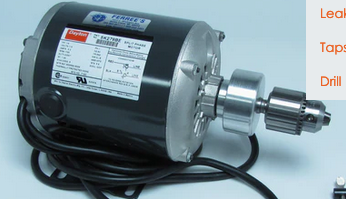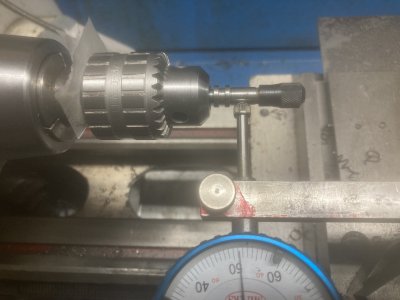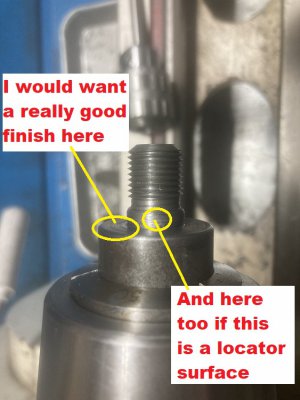- Joined
- Nov 27, 2012
- Messages
- 7,854
Here's a representation to give you a visual of what I was trying to say. But as you can see deflection can be a problem depending how big your chuck is & how much overhang there is (use tailstock support if needed but requires accurate setup also).
I would use the largest pin gauge or whatever that the drill chuck can hold to help with rigidity (if not using tailstock support). Doesn't even need to be something accurate, you could just chuck up a piece of stock, then take a cut so it will then be true to the lathe spindle axis, then you wouldn't even need to use a 4-jaw & indicate. Then mount the drill chuck. But this all assuming your lathe is adjusted so isn't cutting a taper either.
But remember scroll chucks don't have good repeatability throughout it's entire grip range. So if you were successful at truing it up gripping whatever size stock you used, it may not have the same accuracy at other diameters.
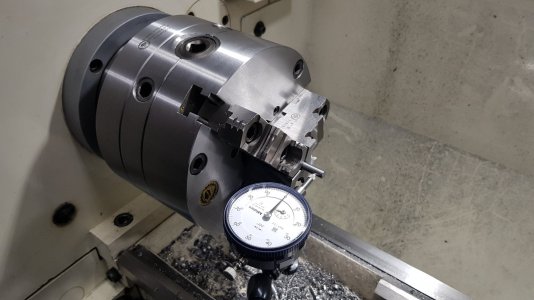
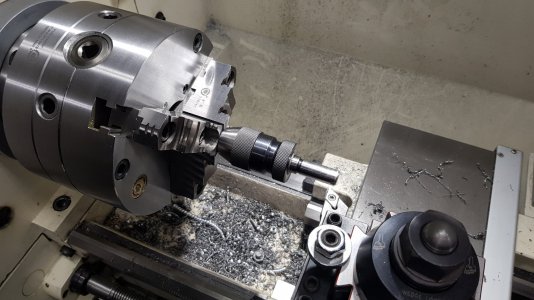
I would use the largest pin gauge or whatever that the drill chuck can hold to help with rigidity (if not using tailstock support). Doesn't even need to be something accurate, you could just chuck up a piece of stock, then take a cut so it will then be true to the lathe spindle axis, then you wouldn't even need to use a 4-jaw & indicate. Then mount the drill chuck. But this all assuming your lathe is adjusted so isn't cutting a taper either.
But remember scroll chucks don't have good repeatability throughout it's entire grip range. So if you were successful at truing it up gripping whatever size stock you used, it may not have the same accuracy at other diameters.




